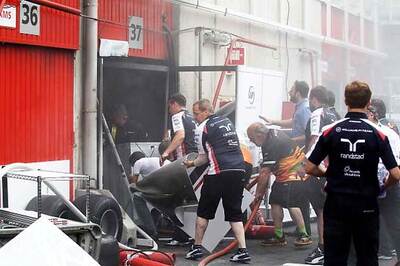
views
'Achhe din' tops the list of the most effective electoral slogans of all time, beating 'Garibi hatao' and 'Aam aadmi' by a mile. Four years ago, it captured the imagination of the electorate. Now, Prime Minister Narendra Modi appears to be reprising his superhit slogan for the 2019 general elections.
The PM presented a rosy picture of the economy in a recent interview, explaining away the unmet expectations of the last four years as legacy issues. 'Acche din' are just around the corner, it seems. Wait, haven't we heard that before? Yes, but the Augean stables left by the UPA were much dirtier than expected. The herculean task of cleaning the mess is finally over and the economy is back on track.
The famous mantra of American politics, 'It's the economy, stupid!' implies that voters will respond to the party/leader that benefits them most in economic terms. This time, it will take all of Modi's persuasive oratory to convince the electorate that he is their best bet. And in the absence of a counter-narrative from the Opposition, he might just pull it off.
The PM seeks to convince us that job stagnation is a myth, doubling of farm incomes is a work in
progress, banks NPAs will soon be a thing of the past, doing business is now easy-peasy and GST is a super success.
It turns out that he was “shocked” at the state of the economy in 2014, because it “was much worse than expected”. It was “terrible”, “unbelievable” and the budget figures were “suspicious”. With rare tact, he chose not to blow the whistle on the UPA by bringing out a white paper, as that might have a discouraging effect in an already pessimistic environment.
Punjab finance minister Manpreet Badal had no such compunction; he brought out a white paper on the state's economy soon after the Congress came to power, presenting the bitter truth that under Akali Dal rule, it had run up a debt of Rs 2 lakh crore. Should he have lied about it in the interests of 'rashtraneeti'?
If the bad news was kept under wraps, does that mean that the government was fudging numbers? Also, if the economy was so fragile, why go in for a disruptive move like demonestisation? The stated objective of curbing black money appears to have failed, judging from the Rs 7,000 crore parked in Swiss banks by Indians.
The PM is right in pointing out that India was in the Fragile Five when he took over, but that may have had to do with the fact that oil was over a hundred dollars a barrel; when it collapsed to below $40, there was recovery all around. Especially for the government, which mopped up additional revenue in annual oil taxes (Rs 1.11 lakh crore in 2015-16 alone)!
On the employment crisis, the PM says there are plenty of jobs to go around, created by government-supported entrepreneurship, but no one knows about them. The issue isn't jobs, it's lack of data on jobs, he said. Since most jobs/employment is in the unorganised sector, he may have a point.
As for agrarian distress, the only effective scheme of the many floated by NDA II has been the neem coating of urea, which has prevented diversion of fertilizers and reduced demand. The crop insurance, national agriculture market and soil health card schemes have all suffered from shoddy implementation and Minimum Support Prices (MSP) have only now been substantially increased.
While GST was long overdue, the fact remains that it was dogged by implementation issues and the multiplicity of slabs have attracted flak. It is nobody's case that milk and a Mercedes Benz should attract the same tax, but small businesses and consumers seem to find it oppressive.
There's no denying that NDA II has done well on certain fronts, like infrastructure, scrapping of archaic laws and Digital India. But the action on NPAs seems to be too little and four years too late. Economists point out that the rupee has fallen drastically and FDI inflows are down while outflows are up (World Investment Report, 2018). The stock market's bull run, analysts say, is winding down.
So, which version of the economy will the voter buy into? Numbers are deployed to argue both sides of the picture with equal vehemence, making it difficult to tell smoke and mirrors from hard fact. Finally, voters will just have to go with their gut, as always.
(The author is a senior journalist. Views are personal)




















Comments
0 comment